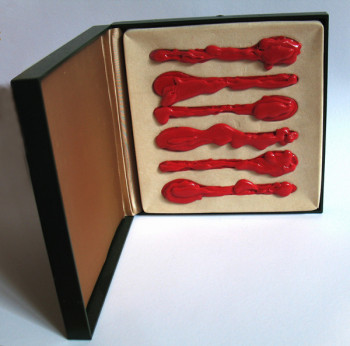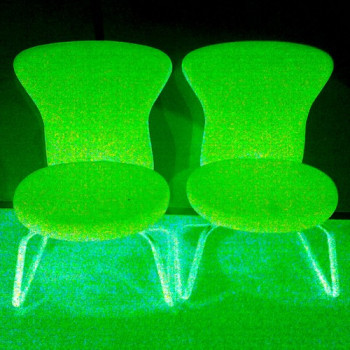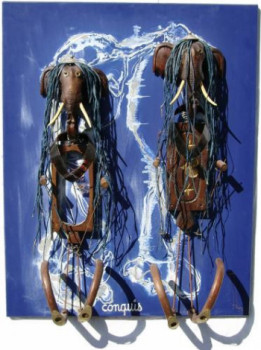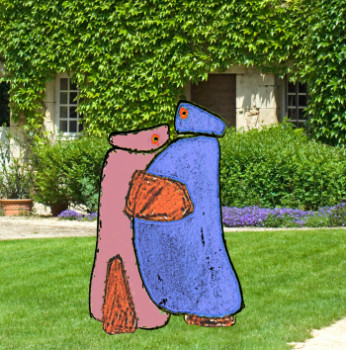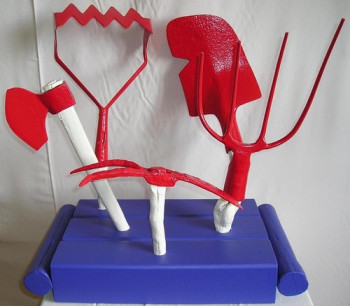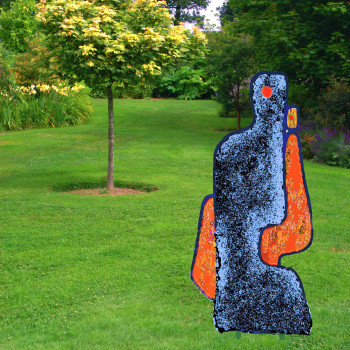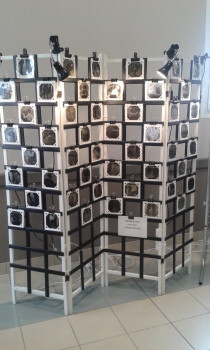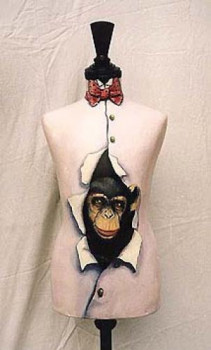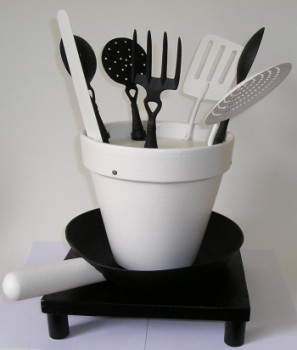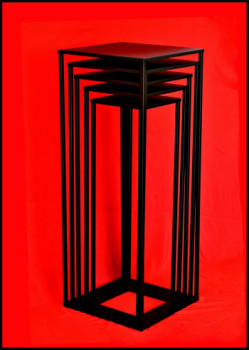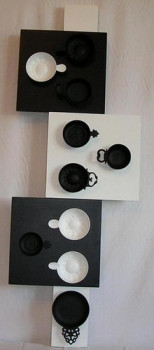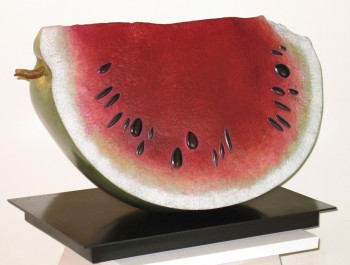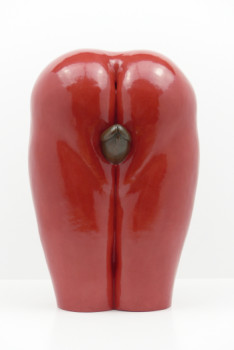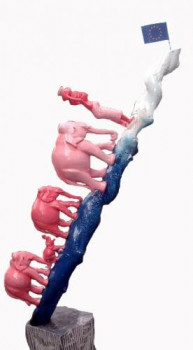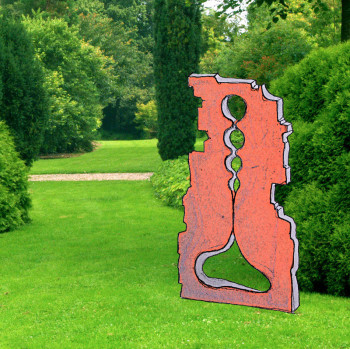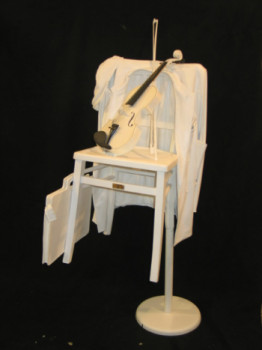
Michelangelo Pistoletto: conceptual art at the heart of his art
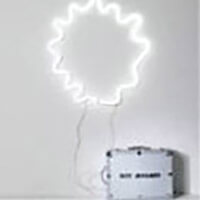
Although he has mastered conventional painting methods and has received well trained, the sculptor Pistoletto showed himself more interested in the conceptual components of art at the beginning of his career. To do so, he used inexpensive materials like tissue paper and mirrors, which helped establish the Arte Povera movement.
An artistic childhood
Michelangelo Pistoletto is high; in a creative home. His mother, Livia Fila, studied with his father, the artist Ettore Olivero Pistoletto, before his parents married. The father of the sculptor artist moved to New York. the family to Turin and launched an art restoration company one year after the birth of the boy. Pistoletto's father taught him how to play. drawing when he was young, and later At the age of 14, he started working in his father's workshop. The young talent studies the important works of the old masters that his father helps to complete. restore in order to understand the history of art. Despite his father's wish to see him follow in his father's footsteps and become a painter, Pistoletto explained. that, from a very young age, he was not interested in music. paint only landscapes and still lifes that he could have seen, but which he rather sought to create. explore the nature of reality and representation. In doing so, he revived viewers' memories of their previous interactions with the works of art. In other words, he seeks to create a more lively and shared dialogue between the artists and the public.
His first exhibition
Pistoletto, who loved painting, began to paint. his formal education at at the age of 18 when his mother enrolled him in advertising school renowned company led by Armando Testa. Pistoletto created and managed own business for several years while continuing to grow. help his father to restore paintings after working on them. a year in Testa's commercial enterprise. Pistoletto is initiated the most modern art through the advertising industry. Pistoletto begins paint self-portraits after having made that there were other styles of painting than those of the ancient masters.
In 1955, he exhibited his first self-portrait, and the Galleria Galaten in Turin dedicated its first exhibition to him in 1960. Two of Pistoletto's self-portraits are featured in the magazine Presenze, which he co-founded with a group of up-and-coming artists. 1957. Marzia Calleri, whom Pistoletto had married in 1955, also contributed to the newspaper. Cristina, the couple's daughter, was born in 1960.
From the peak of his career to his retreat in the mountains
The inspiration for Pistoletto's paintings on mirrored surfaces came to him in 1961 , when he involuntarily discovers his reflection in the layer of translucent varnish that he has placed on a self-portrait. The paintings on mirror that he began to create; made in 1962, which constituted his first major series and the cornerstone of his work, propelled him onto the scene of art contemporary. The last series of sculptures s by Pistoletto, Minus Objects, created in 1965 and 1966, disrupted the usual passive approach to gallery audiences by bringing them to the gallery; outside to engage viewers in a more disorderly manner and using other methods to disrupt the typical viewer experience of art objects. These pieces played a crucial role in the development and understanding of the Arte Povera movement.
At the start of his career, Pistoletto was also interested in the art of performance, and in 1967, he began to work on his work. situate these actions outside traditional exhibition spaces, probably outside of traditional exhibition spaces. the continuation of a journey from the avant-garde Living Theater to the Turin, where its main directors stayed in the city. in the apartment of the artist. For example, as part of its participation in the collective exhibition Con-temp-l'azione (1967), he took the Newspaper Sphere (1966), one of the Minus objects, in a walk to; through the streets of the city connecting the three galleries where The exhibition was held, involving other artists and passers-by to produce a broader creative context. Pistoletto worked on with artists from various artistic fields, including music, theater and literature, in addition to visual arts, at various levels. as his vision of performance evolved. The formation of The Zoo, a group that achieved Collaborative performances in various contexts between 1968 and 1970, notably in the streets of Italian villages, is the fruit of this ideology.
Despite this As his creative achievements grew, the sculptor left the art scene in 1974. He spent time in the San Sicario Mountains and passed the exam to become a ski instructor. This "retirement" is a period of introspection and preparation for the later phases of one's evolving sequence of artistic responses to the outside world. Pistoletto decides to start again. create art, and he starts again. do it. He continues to use a range of media and artistic techniques, and he continues to place importance on art. the performance. In 1978 and 1979, the artist sculptor presented Creative Collaboration, a series of performances carried out at the same time. He performed across the United States in front of diverse audiences who were not typically exposed to music. contemporary art. The work continues the legacy left by by the multi-generational artistic family of Pistoletto when it is presented throughout the city of Atlanta, with the participation of his daughters Cristina, Armona and Pietra. It was a creative partnership that involved many people. both local artists and long-time collaborators, notably the experimental jazz music compositions of Morton Feldman (with whom Pistoletto had staged an adaptation of a play by Samuel Beckett). Among the many proposals, we find mannequins put on stage in a unique way. outside as a play and children performing in front of the residents of a retirement home.
Its social influence on art
The sculptor's artistic activities are motivated by a deep desire to impact social change ;tal. He is committed to as a professor of sculpture at He entered the Vienna Academy of Fine Arts in 1991, and during his nine years there, he collaborated with his students to create a program aimed atbreak down traditional boundaries between artistic disciplines and academic hierarchy by allowing students to actively participate in art. projects with their professors and even shape the curriculum. With the launch of Project Art in 1994, the artist was able to work with a variety of artists. of artists with the aim of blurring the boundaries between art and everyday life while encouraging change through manifestos, public gatherings, installations and exhibitions. exhibitions. In 1998 he founded Biella la Cittadellarte-Fondazione Pistoletto, thus giving the objectives and agrave; the production of Project Art a welcoming place. This "citadel of art" is structured with staff and offices to plan and carry out programs in certain non-artistic disciplines such as economics, politics, ecology and communication. It relies on art as the main channel of collaboration to generate greater societal harmony. A conference table with a mirrored top and a top that looks like a mirror. The Mediterranean Sea is an iconic functional sculpture created by Cittadellarte and titled Love Difference (2002 ). It is intended for encourage acceptance of diversity racial and many political systems in this region of the world plagued by violence. agitation.
Découvrez quelques oeuvres inspirées de Pistoletto

